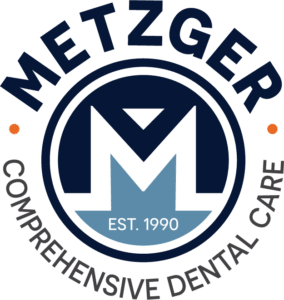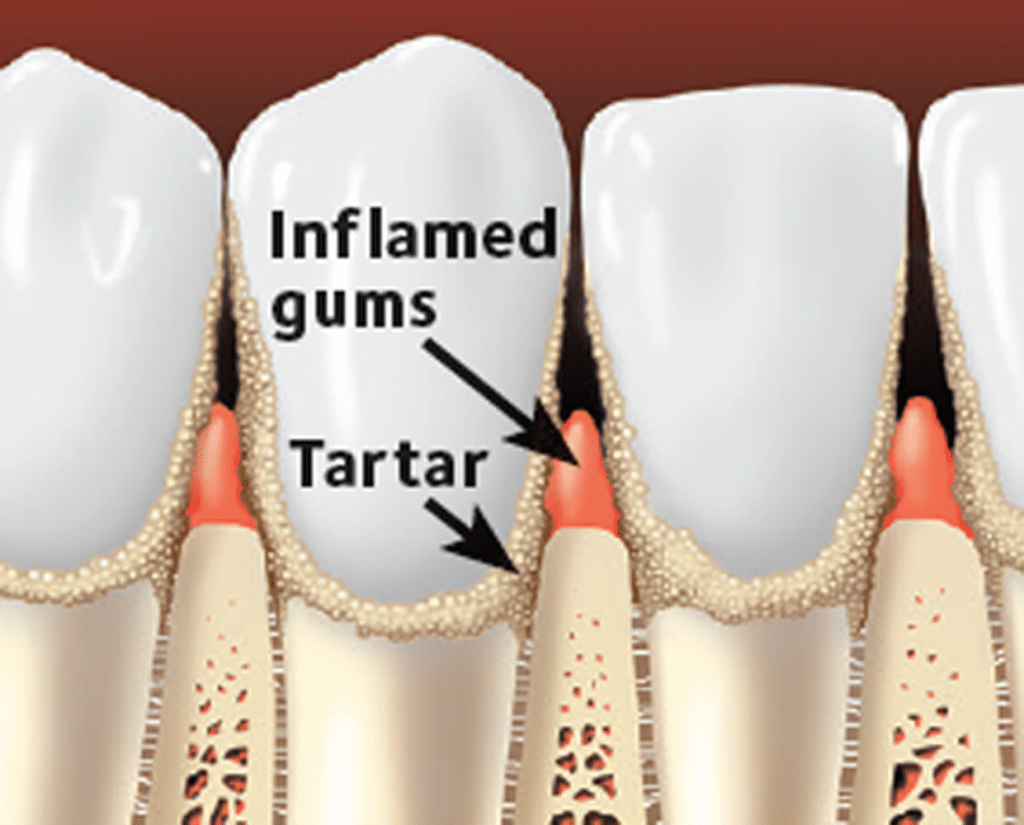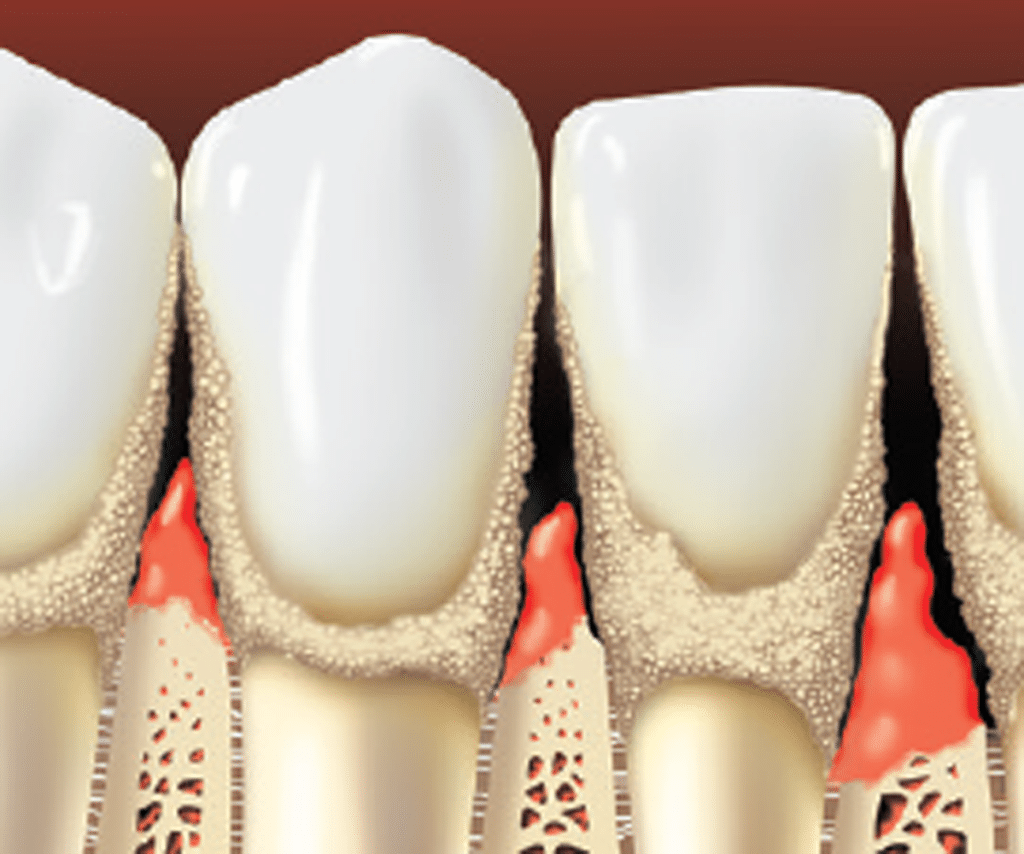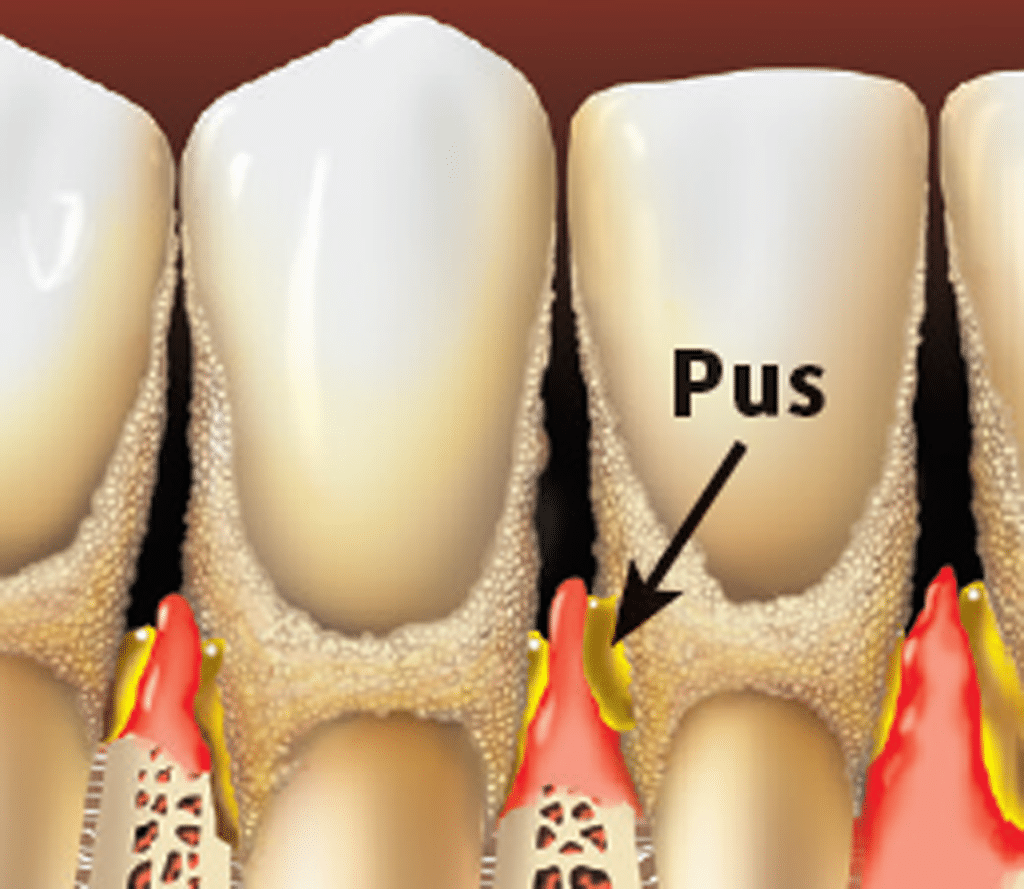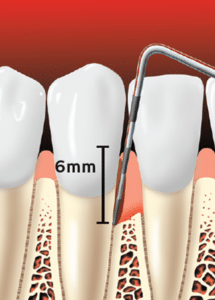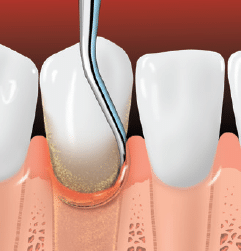Periodontal (Gum) Disease Treatment

If it’s been a few years since your last cleaning, or your gums are really sore, or you’re bleeding a lot while brushing and flossing, you may be experiencing early warning signs of periodontal (gum) disease.
Periodontal disease treatment can take various forms, and the goal is to restore your diseased tissues back to health. With periodontal therapy, we can help alleviate many dental health problems by removing soft or hardened plaque from below your gum line. This procedure, known as scaling and root planing will facilitate the healing of your gums, and prevent tooth and bone loss from the spread of gum disease.
What to Expect
At your routine dental cleaning and exam, we may determine from your X-Rays or mouth pocket depth assessment that you need periodontal therapy. You will be scheduled for an appointment with one of our hygienists to complete the deep cleaning, called scaling and root planing.
Your appointment for scaling and root planing will last approximately one and a half hours, to allow us to specifically and thoroughly clean each individual tooth and gum area affected by the periodontal disease.
If you require more advanced treatment for your periodontal disease, we may refer you to a gum specialist, or Periodontist. Our office will work together with the Periodontist to preserve and restore your teeth after completion of your treatment,
Still Curious?
The Connection Between Gum Disease and Other Health Issues
Gum disease has been linked to some other diseases. People with diabetes or heart disease are more likely to get gum disease. Strokes and high stress also may be related to gum disease. Researchers are still studying these links. It is important to talk to your dentist if you suffer from any long-term health problem. Together, you can work out an oral care plan for your best oral and overall health.Warning Signs of Gum Disease
If you notice any of the signs below, see your dentist. However, you can have gum disease and not notice any of these warning signs. That is why regular dental checkups are very important.- gums that bleed when you brush or floss
- gums that are red, swollen, puffy, or tender
- gums that no longer hug your teeth tightly
- bad breath that doesn’t go away
- pus between your teeth and gums
- feeling that your teeth are loose
- a change in the way your teeth fit together when you bite
- a change in the way your partial dentures fit.
Patient education content ©2020 American Dental Association. All rights reserved. “ADA” and the “ADA” Logo are registered trademarks of the American Dental Association
Stages of Gum Disease
Checking for Gum Disease
Periodontal Probe
Your dentist or hygienist uses an instrument called a periodontal probe to gently measure the depth of the pockets around each tooth When your teeth are healthy, the pocket depth is 3 millimeters (mm) or less. Usually, the more severe the disease, the deeper the pocket, which give bacteria more room to grow and cause serious damage to your teeth, gums and bone.
Patient education content ©2020 American Dental Association. All rights reserved. “ADA” and the “ADA” Logo are registered trademarks of the American Dental Association.
Treating Gum Disease
Your gum disease treatment will depend on several factors, including your personal health history and the stage of your gum disease.
If your gum disease is beyond gingivitis, the first step in treating gum disease usually involves a special deep cleaning called scaling (SCAY-ling) and root planing (PLAY-ning). This treatment may be done over more than one visit, depending on your personal needs.
Scaling: Your dentist or hygienist removes plaque and tartar down to the bottom of each periodontal pocket.
Root Planing: Then, the root surfaces of your teeth are smoothed, or “planed”, to allow the gum tissue to heal and reattach to the teeth.
Your dentist or hygienist may recommend certain medicines to help control infection and discomfort or to aid healing. You may be given pills, a mouth rinse or they may place medication directly into the periodontal pocket after the treatment.
Professional Cleaning
In the very early stages – when it is gingivitis – you may just need a professional cleaning from your dental team. They can also give you some great advice and tips on how you can keep your teeth and gums healthy.
Deep Cleaning – Scaling and Root Planing
Periodontal Surgery
Sometimes, scaling and root planing isn’t enough treatment on its own. If pockets do not heal enough after scaling and root planing, gum surgery may be needed.
Surgery allows your dentist to remove plaque and tartar from hard-to-reach areas. Afterwards, your gums will be stitched into place to tightly hug your teeth.
Surgery can also help to shrink pocket depth and make it easier for you to keep your teeth clean.
Keep Your Gums Healthy after Treatment
Periodic periodontal cleanings help you stay on top of your gum disease
Once your gum disease is under control, it is very important for you to get dental care on a consistent basis. The periodic cleanings recommended after these treatments are called periodontal maintenance care. These cleanings are more extensive than the standard cleaning and will help you keep your gums healthy.
Your periodontal maintenance involves cleanings that are deeper than a normal cleaning in the dental office. With periodic maintenance, the amount of plaque bacteria is lowered. Then, the inflammation can get better, pockets can shrink and your gums can become healthier.
Patient education content ©2020 American Dental Association. All rights reserved. “ADA” and the “ADA” Logo are registered trademarks of the American Dental Association.
There's no better time to get started.
Call (817) 428-1800 or click below to schedule your appointment today.
What Our Patients Have to Say
Read more reviews from thousands of our happy patients
1213 Hall Johnson Road, Suite 100, Colleyville, TX 76034
| Monday - Wednesday | 8:00 AM — 5:00 PM |
| Thursday | 8:00 AM — 4:00 PM |
| Friday - Sunday | Closed |
We are closed for lunch from 1 PM – 2 PM.
